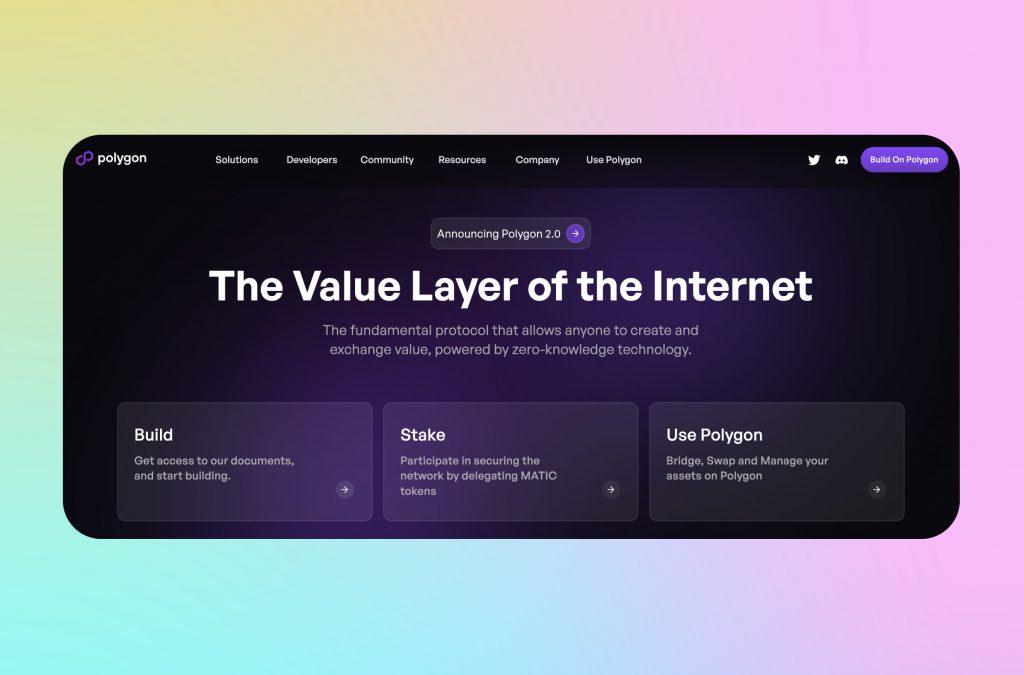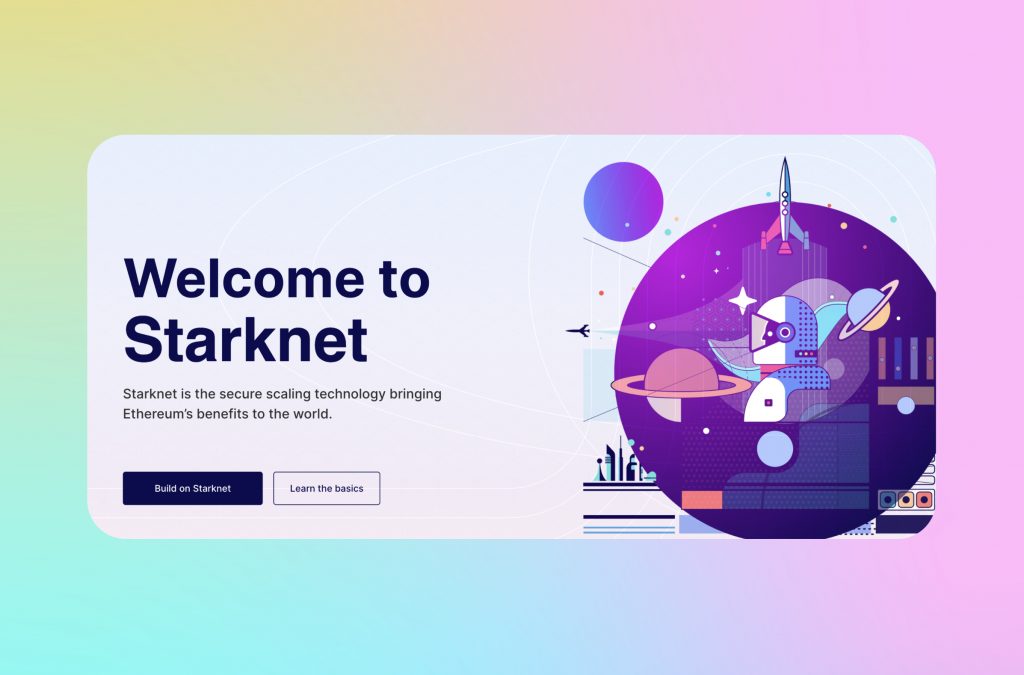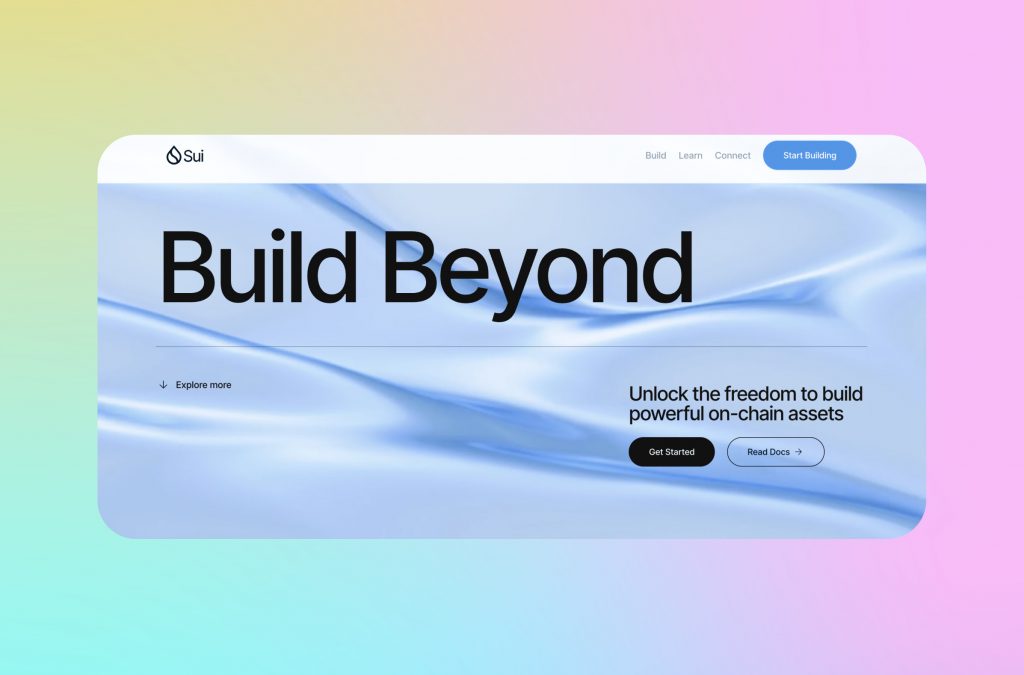Table of Contents
In the ever-evolving landscape of blockchain technology, developers are spoilt for choice when it comes to selecting the most suitable blockchain for their projects. To aid in this decision-making process, we’ve curated a comprehensive guide to the 10 best blockchain platforms to develop on in 2023.
This guide will delve into the technical intricacies, unique features as well as feature blockchain tutorials that you’ll find easy to begin with. Let’s go!
1. Ethereum
Ethereum is a layer-1 blockchain, which means it is the base layer that other blockchains platforms can be built on top of. It uses a proof-of-stake (PoS) consensus mechanism, allowing validators to randomly add blocks to the blockchain based on the amount of ETH they have staked. Ethereum is built on a foundation of research, open standards, and community collaboration and was co-founded by Vitalik Buterin.
☀️ Learn Ethereum development ☀️
Ethereum, at the moment, is the most popular blockchain to build decentralized applications (dApps). It has a large and active community of developers, and a wide range of tools and resources available. It is also home to a number of popular dApps, such as Decentralized Finance (DeFi) platforms, Non-Fungible Token (NFT) marketplaces, and gaming applications.
In addition, Ethereum’s native programming language is Solidity. Solidity is a statically typed, contract-oriented programming language that is designed to write smart contracts. It’s easy to learn and use, and has been adopted by several web3 programmers.
Large and active community of developers.
Wide range of tools and resources available for Ethereum development.
Home to a number of popular dApps.
Constantly being upgraded and improved.
2. Polygon
Polygon is a layer-2 scaling solution for Ethereum. It uses a proof-of-stake consensus mechanism and supports a variety of Ethereum Virtual Machine (EVM) compatible blockchains.

The blockchain is designed to be highly scalable and secure. It can process thousands of transactions per second and is secured by the Ethereum network. Polygon is also interoperable with other blockchain platforms, making it a good choice for building cross-chain applications.
☀️ Learn Polygon development ☀️
As for writing smart contracts, Polygon supports a variety of programming languages, including Solidity, Python, and JavaScript.
Processes up to 65,000 transactions per second so highly scalable.
Its proof-of-stake consensus mechanism is more energy-efficient than proof-of-work.
Very efficient blockchain and gas fee is massively lower than Ethereum.
Borrows security and decentralization of Ethereum while providing additional scalability and performance.
3. Binance Smart Chain
Binance Smart Chain (BSC) is a blockchain that is compatible with the Ethereum Virtual Machine (EVM). It uses a delegated proof-of-stake consensus mechanism, in which validators are elected by token holders. BSC is designed to be highly scalable and efficient and can process thousands of transactions per second with a very low transaction fee.
☀️ Create a token on BSC ☀️
Binance Smart Chain, like Polygon, is interoperable with other blockchains, which enables creation of cross-chain applications.
The programming language used on Binance Smart Chain (BSC) is Solidity, a Turing-complete language.
BSC can process up to 150,000 transactions per second.
Scalable, energy-efficient and gas fee are very low, making it a top choice among devs.
Benefits from the broader Binance ecosystem, contributing to adoption, development resources, and user base.
The confirmation time for a transaction on BSC is 3 blocks, or 9 seconds.
4. Solana
Solana is a blockchain platform that was created in 2017 by Anatoly Yakovenko. It is designed to be a high-performance blockchain that can process a large number of transactions per second. Solana uses a proof-of-history consensus mechanism, which is a more efficient alternative to proof-of-work.
☀️ Create a Solana token ☀️
Solana’s native programming language is Rust. Rust is a statically typed, compiled programming language that is designed to be safe and secure.
Processes up to 50,000 transactions per second and confirms in milliseconds.
Proof-of-history consensus mechanism and time stamping makes it far more secure.
Large and active community of developers to lend support.
Solana is energy efficient and transactions costs are very low.
5. Starknet
Starknet is a layer-2 scaling solution for Ethereum. It uses a zero-knowledge proof (ZKP) technology to verify transactions off-chain, which allows Starknet to process transactions much faster than Ethereum.

It is designed to be highly scalable and secure. It can process thousands of transactions per second, and it is secured by the Ethereum network. Starknet is also gas-free, meaning that users do not have to pay any transaction fees.
☀️ Learn development on Starknet with Cairo ☀️
Starknet’s native programming language is Cairo. Cairo is a functional programming language that is designed to be used for writing smart contracts.
It’s a layer 2 solution for Ethereum so can scale to millions of transactions per second.
Uses zk-STARKs, which are a type of zero-knowledge proof that is very secure.
Growing and active community of developers.
Starknet’s gas fees are very low, unless there is a peak usage time.
6. Polkadot
Polkadot is a blockchain that uses a proof-of-stake consensus mechanism. It is designed to be highly scalable and interoperable, and its unique feature is its ability to connect multiple blockchains, or parachains, into a single network. This allows for the transfer of data and assets between different blockchain platforms, and the creation of more complex and interoperable applications.
The leading implementation of Polkadot is built in Rust and uses the Substrate framework. Rust is a modern, safe, and performant programming language that is well-suited for building blockchains. Substrate is a modular framework that provides a variety of features that are essential for developing blockchain platforms, such as consensus, networking, and state management.
☀️ Build your blockchain on Polkadot with Substrate ☀️
Other programming languages that can be used to develop Polkadot applications include:
- JavaScript
- Go
- C++
- Python
These languages can be compiled to WebAssembly (WASM), which is a low-level bytecode that can be executed by all Polkadot nodes. This allows developers to choose the language that they are most comfortable with and that best suits their needs.
Highly scalable and interoperable ideal for apps that get high volume of traffic.
Modular design enables developers to customize the platform to meet their specific needs.
Secure due to relay chain, ensuring all data and transactions on Polkadot are secure and tamper-proof.
Growing community of active developers. Ideal for users who require help and support.
7. Sui Blockchain
Sui is a permissionless, proof-of-stake (PoS) blockchain that aims to provide instant settlement and high throughput while also enabling a wide range of next-generation latency-sensitive decentralized applications.

It is designed to be highly scalable and secure. The blockchain’s unique feature is its ability to scale horizontally, meaning that it can add more nodes to the network to increase its capacity. This makes Sui Blockchain a good choice for applications that require high throughput, such as DeFi and gaming.
☀️ Create a fungible token with Sui Move ☀️
The native programming language for the blockchain is Move, which is based on Rust. Move is a statically typed language, which means that the types of variables and expressions must be declared before they can be used making it easier to prevent errors.
First-of-its-kind composable transaction, allowing devs to combine multiple transactions into a single one.
Parallel processing of simple transactions to improve throughput.
Uses objects as its basic unit of data storage rather than accounts making it more scalable.
Gas fee is low and remains stable, making transactions affordable for developers.
8. Flow blockchain
Flow blockchain uses a unique consensus mechanism called Proof of Stake Authority (PoSA). PoSA is a hybrid consensus mechanism that combines the best features of proof-of-stake and proof-of-authority.
Flow blockchain’s unique feature is its multi-role architecture. This means that different nodes on the network are responsible for different tasks, such as validating transactions, storing data, and executing smart contracts. This makes the network more efficient and scalable, as it can distribute the workload across multiple nodes.
☀️ Build on Flow blockchain ☀️
Moreover, its native programming language Cadence is a resource-oriented and statically typed programming language.
Processes up to 10,000 transactions per second, making it one of the fastest blockchains.
Gas fees are very low, making it a cost-effective platform for developers and users.
Design is extensible, so it can be easily adapted to new use cases and requirements.
Number of security features present to protect its data and transactions.
9. Avalanche
Avalanche is a blockchain platform that uses a unique consensus mechanism called Avalanche Consensus. The Avalanche Consensus is a proof-of-stake consensus mechanism that is designed to be scalable and secure.
Avalanche has a multi-chain architecture and is composed of three different blockchains, each with its own purpose:
- The X-chain is used for transferring assets between different blockchains.
- The C-chain is used for running smart contracts.
- The P-chain is used for managing the network and coordinating the other two chains.
☀️ Avalanche token tutorial ☀️
Avalanche’s native programming languages are Solidity and Python. Solidity is a statically typed, contract-oriented programming language designed to be used for writing smart contracts. On the other hand, Python is a general-purpose programming language that is easy to learn and use.
Avalanche’s multi-chain architecture makes it more scalable and flexible than other blockchains.
Processes up to 4,500 transactions per second, making it one of the fastest.
Gas fees are very low so it is cost-efficient for developers.
Designed to be extensible, so it can be easily adapted to new use cases and requirements.
10. Stacks
Stacks is a blockchain that is built on top of the Bitcoin network and is interoperable with it. This means that applications built on Stacks can interact with the Bitcoin network. This makes it possible to build decentralized applications that can use the security and stability of Bitcoin.

The Stacks blockchain uses a proof-of-transfer (PoX) consensus mechanism, which is a more secure and efficient alternative to traditional proof-of-work consensus mechanisms. POX allows Bitcoin miners to earn rewards for securing the Stacks blockchain. Talking about rewards, Stacks also has its own native cryptocurrency, called STX.
☀️ Stacks and Clarity tutorial ☀️
Stacks’ native programming language is Clarity. Clarity is a statically typed, functional programming language that is designed to be secure and efficient.
Stacks is a Layer-1 blockchain that can scale to millions of transactions per second.
Uses a proof-of-transfer consensus mechanism based on Bitcoin’s PoW consensus mechanism. This makes it a very secure.
Stacks is interoperable with Bitcoin so can be used to create applications that interact with Bitcoin’s ecosystem.
Highly efficient blockchain so developers can build applications that are cost effective to run.
And just like that, these are 10 blockchain platforms that have been tried and tested by developers. What makes them the top blockchain platforms for 2023 is their resilience, continued upgrades and improvements, and their ease of us.
Give one or a few of them a shot with courses mentioned below them, see which one works for you and start building your very own passion projects.
